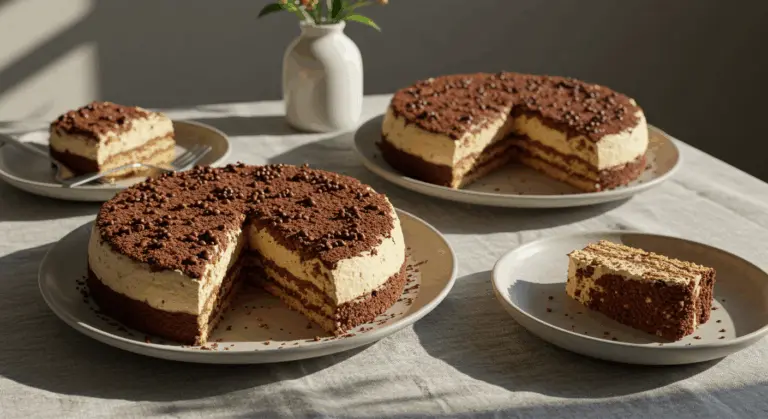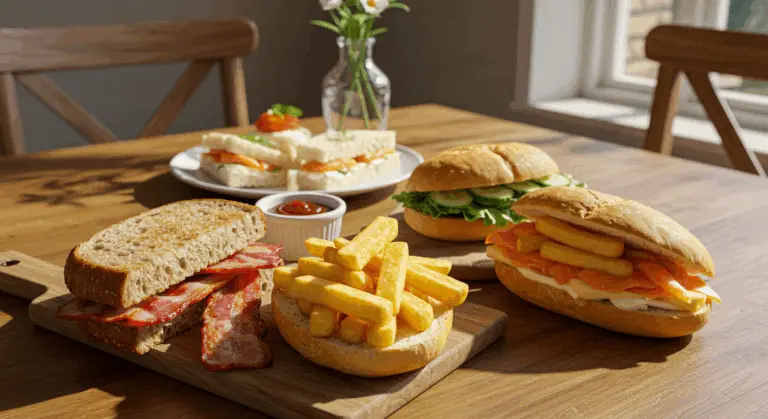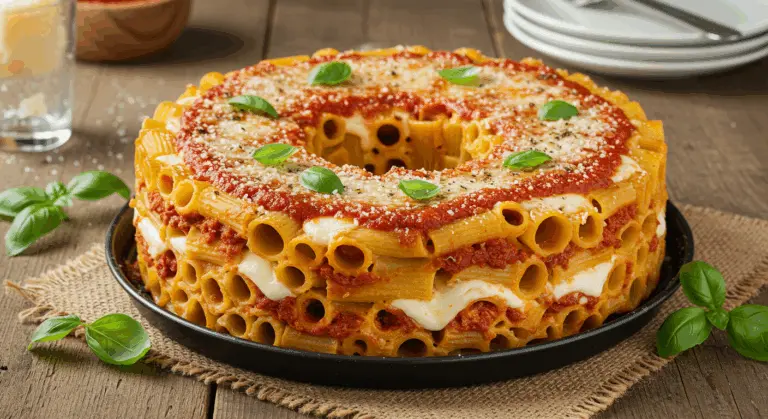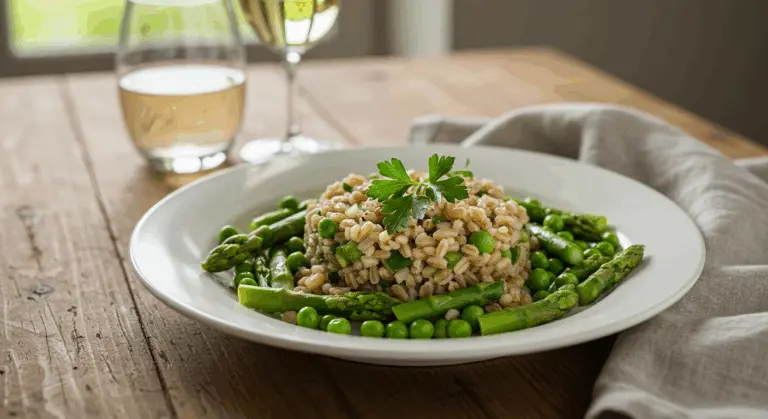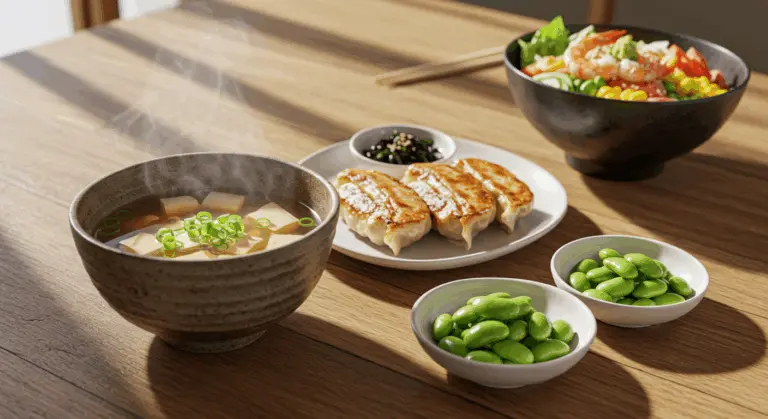English Baked Potatoes – The Ultimate Guide to Jacket Potatoes
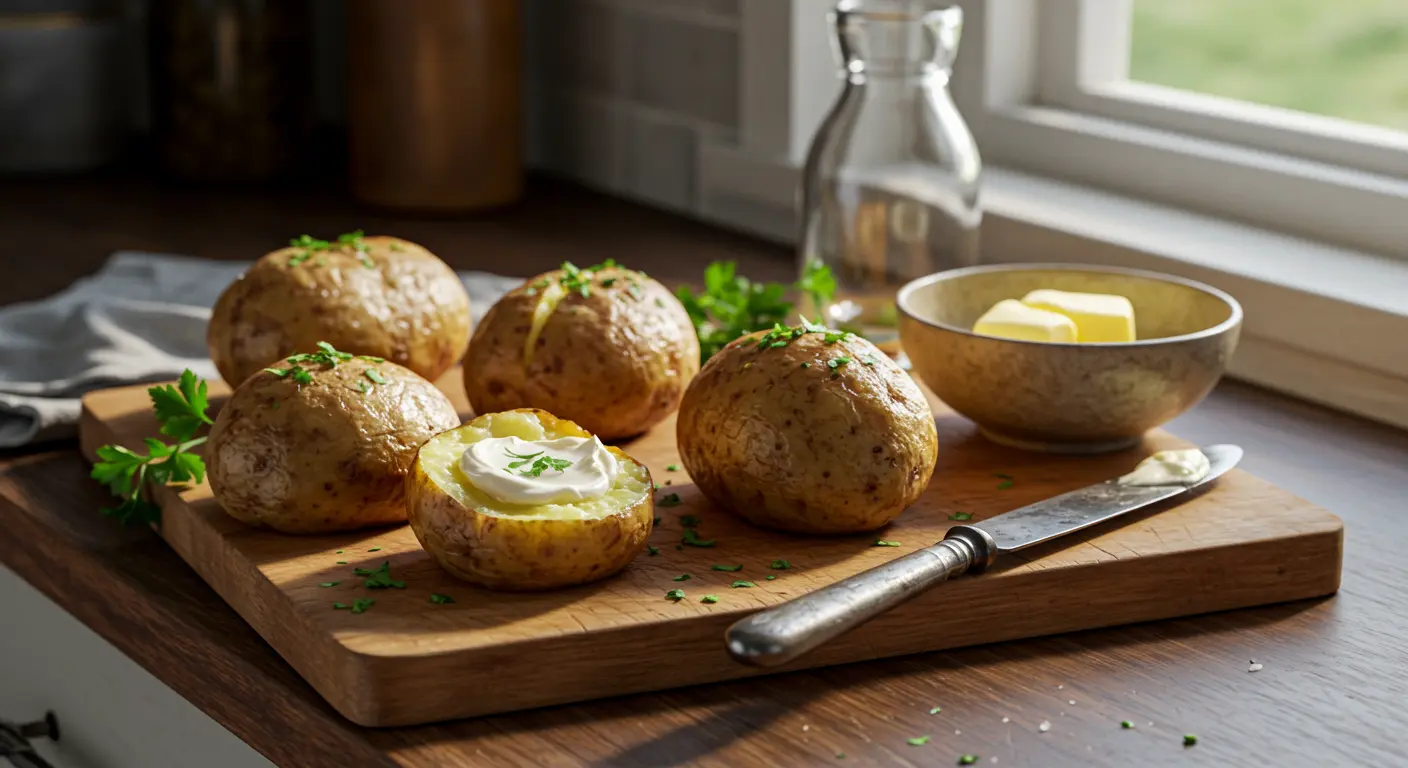
What Are English Baked Potatoes?
English baked potatoes—affectionately dubbed ‘jacket potatoes’ across the UK—remain a beloved staple of British cuisine. The whimsical name tells the whole story: that gloriously crispy outer skin forms a protective ‘jacket’ around the cloud-like interior within.
These humble yet hearty spuds have earned their permanent spot in British food culture through their beautiful simplicity, wallet-friendly nature, and remarkable versatility.
Across England, jacket potatoes appear everywhere: sizzling from street food carts, warming family kitchens, gracing pub menus. What makes them so enduring? Simple practicality—an affordable, soul-satisfying dish that has nourished generations through thick and thin.
Choosing the Best Potatoes for Baking
Creating an exceptional jacket potato starts with potato selection—get this right, and you’re well on your way. Russet potatoes reign supreme here, their high starch content and minimal moisture creating that ideal marriage of crispy skin and fluffy interior.
British bakers often reach for Maris Piper potatoes, a variety that shares Russets’ starchy excellence and baking prowess.
When shopping, seek out medium-to-large specimens boasting thick, unblemished skins. Avoid any with green patches, sprouting eyes, or soft spots—signs of poor quality that will ruin your potato.
How to Bake the Perfect Jacket Potato
Creating the perfect English jacket potato is about technique, not complexity. The magic lies in understanding your oven and respecting the process—follow these proven steps for great results every time:
Popular Toppings for Jacket Potatoes
This is where jacket potatoes really shine: their role as a blank canvas awaiting creative expression. British favorites span the spectrum:
Nutritional Benefits of Baked Potatoes
Jacket potatoes are far from ’empty carbs’—they’re actually packed with nutrients, particularly when you embrace the skin-on tradition.
They’re also rich in vitamins: about 28% of your daily vitamin C needs and 27% of vitamin B6 requirements in one satisfying spud.
The base potato arrives naturally fat-free, cholesterol-free, and surprisingly modest in calories—around 160 for a medium specimen before any toppings join the party. Those complex carbohydrates? They deliver sustained energy that keeps you satisfied longer.
Your choice of toppings will affect the overall nutrition, of course. Traditional additions like cheese boost calcium and protein while increasing fat content. Baked beans contribute extra fiber and plant-based protein.
Storage and Reheating Tips for Leftover Baked Potatoes
Start by letting—allow those potatoes to cool completely before placing them in airtight containers. They’ll keep happily in the refrigerator for up to five days.
To reheat them, the oven remains your best ally to get that crispy skin back: 15–20 minutes at 350°F (175°C) works wonders.
For extended storage, wrap cooled potatoes individually in foil, nestle them in freezer bags, and freeze for up to one month. Reheat directly from frozen—no thawing required—in a 350°F (175°C) oven for 30–40 minutes.
Cultural Significance of Jacket Potatoes in England
In British food culture, jacket potatoes hold a special place—they embody comfort, practicality, and tradition woven through generations of shared meals.
These popular potatoes have become part of Britain’s seasonal traditions, particularly during autumn and winter celebrations.
In modern Britain, jacket potatoes are the ultimate democratic food—equally welcome on gastropod menus, school lunch trays, workplace canteens, and family dinner tables.
Despite changing food trends in Britain, the humble jacket potato remains popular—a truly British dish that adapts with the times while keeping its essential charm.

